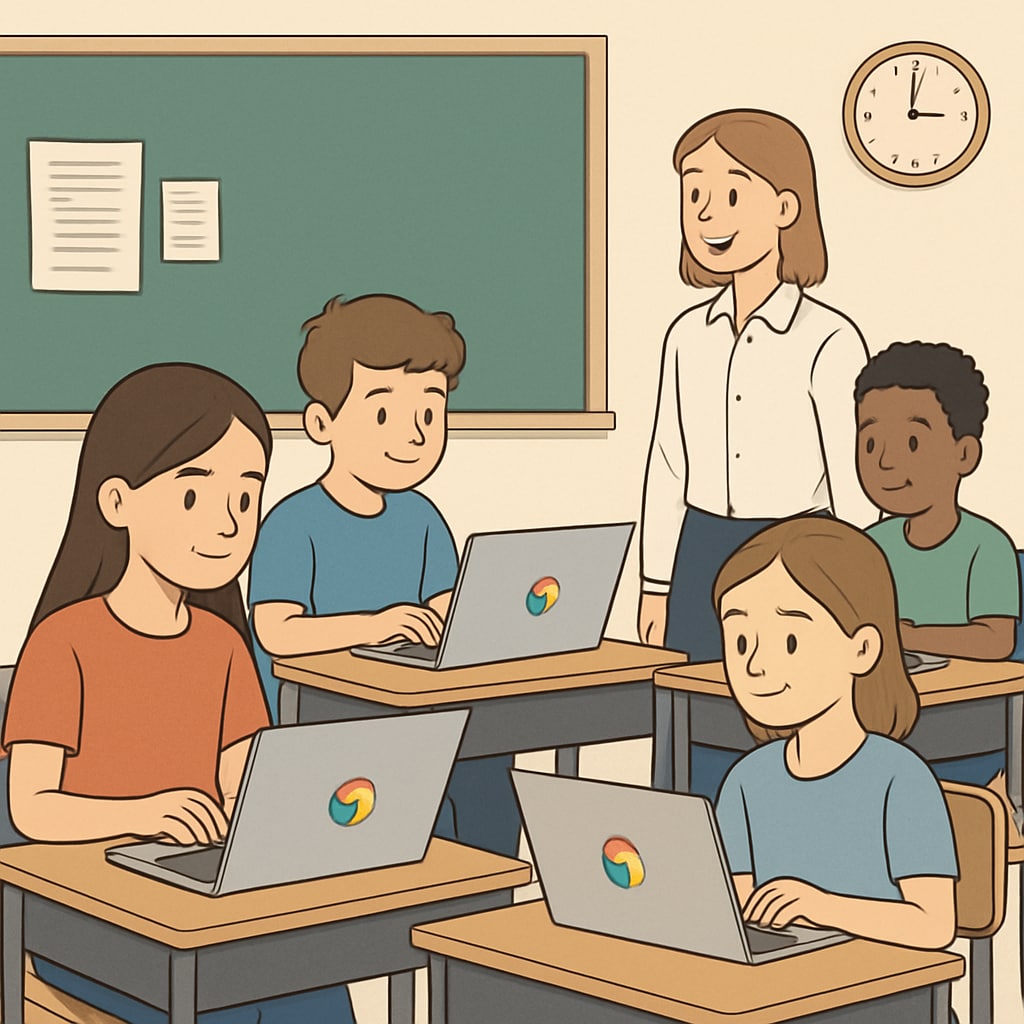In modern K12 education, tools like Chromebooks have revolutionized classrooms, offering unparalleled efficiency in learning processes. While this technological shift enhances productivity, it raises concerns about whether these advancements inadvertently diminish critical thinking skills and curiosity among students. This article examines the tension between efficiency-driven EdTech tools and the cultivation of deep cognitive abilities, urging educators to strike a thoughtful balance.
How Efficiency-Driven EdTech Shapes Classroom Learning
Chromebooks and other educational technologies have become staples in classrooms worldwide. These tools streamline tasks such as research, collaboration, and assignment submission, enabling students to accomplish more in less time. Additionally, they provide access to vast online resources, which makes learning more interactive and accessible.
For example, a student working on a research project can quickly locate multiple sources and compile information within minutes, eliminating the need for manual library searches. Online quizzes and adaptive learning platforms also allow teachers to assess and personalize the learning experience efficiently.
However, this emphasis on speed and convenience can come at a cost. The reliance on pre-determined algorithms and instant solutions may deter students from engaging in deeper, critical analysis of topics. Instead of questioning the validity of information or exploring alternative perspectives, students may simply accept the first answer provided by a search engine.

The Decline of Critical Thinking and Curiosity
Critical thinking—the ability to analyze, evaluate, and synthesize information—is a cornerstone of intellectual development. Similarly, curiosity drives students to ask questions, challenge assumptions, and explore new ideas. These skills are crucial for navigating complex problems in an increasingly interconnected world.
Yet, the efficiency-focused nature of EdTech tools may inadvertently suppress these abilities. For instance, when students rely on automated solutions or pre-filled templates, they miss opportunities to think independently and creatively. Over time, this can lead to a reduced capacity for problem-solving and a diminished interest in exploring nuanced concepts.
Furthermore, the constant availability of answers through technology may discourage students from embracing uncertainty. Instead of grappling with challenging questions or engaging in trial-and-error learning, students may opt for the quickest route to a solution, potentially stifling their intellectual growth.

Striking a Balance: Efficiency vs. Cognitive Development
While EdTech tools like Chromebooks undoubtedly offer significant benefits, educators must carefully integrate these technologies to ensure they support—not hinder—critical thinking and curiosity. Here are some strategies to achieve this balance:
- Encourage Inquiry-Based Learning: Design assignments and projects that require students to ask questions, conduct research, and develop their own conclusions rather than relying solely on digital tools.
- Foster Collaborative Discussions: Use technology to facilitate group discussions where students can share diverse perspectives and challenge each other’s assumptions.
- Promote Problem-Solving Activities: Incorporate tasks that require students to analyze scenarios, evaluate multiple solutions, and justify their decisions.
- Limit Over-Reliance on Automation: Balance automated tools with traditional methods, such as handwritten essays or manual calculations, to develop a range of cognitive skills.
By implementing these measures, educators can maximize the advantages of EdTech while nurturing students’ critical thinking and curiosity.
Conclusion: The Path Forward
Efficient EdTech tools like Chromebooks undoubtedly enhance productivity and accessibility in education. However, their widespread adoption should not come at the expense of critical thinking and curiosity—skills essential for lifelong learning and success. Educational institutions must prioritize a balanced approach, ensuring that technology serves as a supplement rather than a substitute for deep cognitive engagement.
As we continue to integrate advanced tools into classrooms, it is vital for educators, parents, and policymakers to remain vigilant about their impact on students’ intellectual development. Only by striking the right balance can we prepare the next generation to think critically, question boldly, and innovate effectively.


